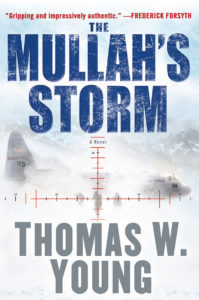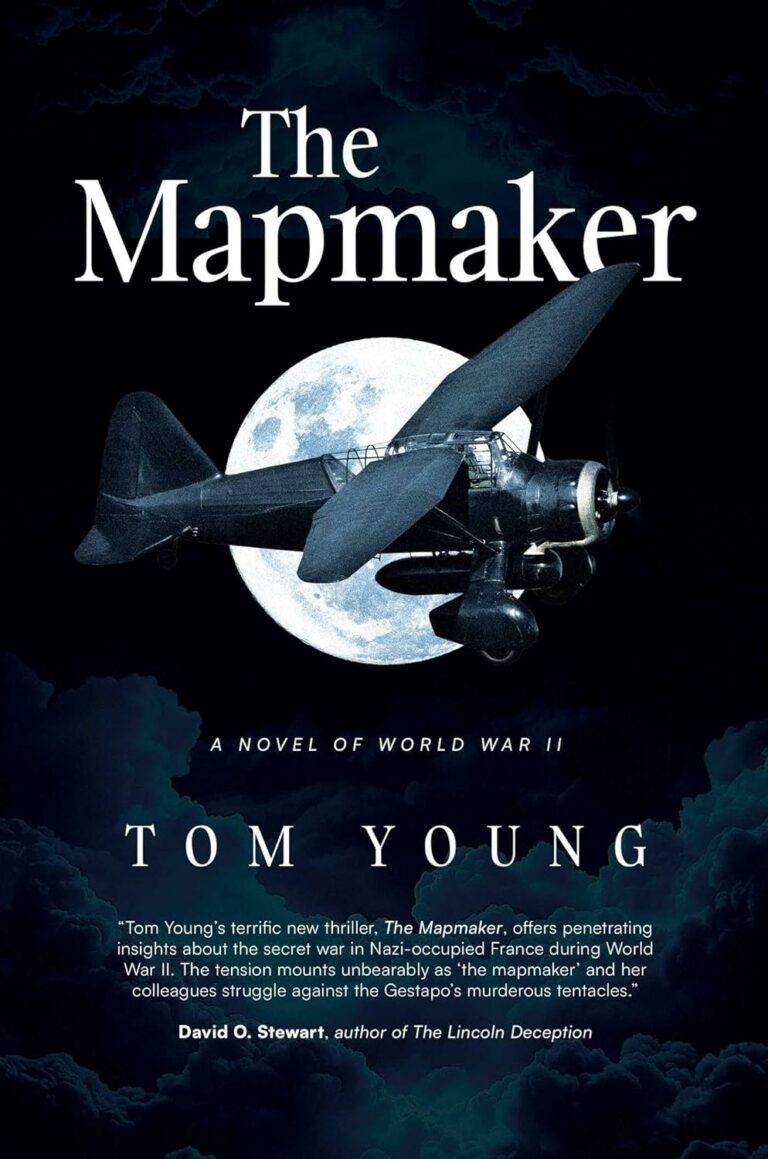The Mullah’s Storm Backstory
 The Story Behind The Mullah’s Storm
The Story Behind The Mullah’s Storm
When writing fiction, your best work may come from what scares you the most: you take pen in hand and imagine the worst. When I first flew into Afghanistan, what scared me the most wasn’t the thought of getting shot down and killed. It was the thought of getting shot down and not killed.
For most aviators, an encounter with the enemy usually happens in the form of lights streaming up from the earth. It has an air of unreality about it, almost like a video game. If those lights don’t hit you, they don’t hurt you. But what if you had an airplane blown out from under you and you met the enemy on his terms, in his territory? What would you face on the ground? What would your buddies need you to do? Under conditions of extreme duress and hardship, would you make decisions you could live with later on?
When I went to the Air Force Survival School years ago, an instructor gave a briefing I have never forgotten. He said, “Every Air Force flier shot down in Vietnam, captured, and dragged to the Hanoi Hilton sat right here in this auditorium and thought, ‘It won’t happen to me.’”
I still think it won’t happen to me. But if it did? The Mullah’s Storm is an imagining of that fear.
The book’s action begins with the downing of a C-130 Hercules in Afghanistan, set at an indeterminate time in the war. It could have happened in 2001, or it might not have happened yet. A shoulder-fired missile blows my main characters out of their normal world and onto a journey that forces them to disregard personal safety and even personal loyalties for the sake of the mission.
My fears have become reality for some service members, and the characters inThe Mullah’s Storm are composites of people I have known. One of those people was an early mentor and squadron mate who had served as a Marine Corps helicopter crew chief in Vietnam. He enjoyed target shooting, and I assumed such an avid marksman would also be a hunter. But when I invited him to go duck hunting, he declined. He said, “When I was shot down in Vietnam, I learned what it felt like to be hunted. I have never hunted anything since.”
Though my colleague’s Vietnam ordeal echoes through the book, the characters draw their motivations and mindsets from veterans of the current wars. These service members, all volunteers, come from the best-educated military ever fielded. American troops have more skill and training than ever before, and their leaders have more confidence in them. They have more individual responsibility, and in extremis, more ability to act alone when necessary. They are not cynical, but neither are they naive about their missions and the mistakes of those who send them on those missions.
Another difference with today’s military is the greater contributions of women. Their presence as part of the team no longer raises eyebrows; in fact, it is taken for granted. My novel’s female character, Sergeant Gold, was inspired by the women with whom I have served. Those real-life military women include some of the best pilots, navigators, and flight engineers I’ve known.
Other characters are from a U.S. Army Special Forces team. As a C-130 flight engineer, I often had the pleasure of working with Special Forces. Sometimes we flew SF troops during their parachute training, dropping freefall jumpers from so high that they breathed from an oxygen bottle on the way down. In addition to their other military skills, each SF soldier is fluent in a foreign language. Those guys are very smart and very tough, and I’ve seen them face awful conditions with spirit and humor.
I could have set this novel, or one very much like it, in Iraq or even Bosnia or Kosovo. But during airlift missions over Afghanistan, I was struck by the stark beauty of the country as seen from the air: snows of the Hindu Kush, great distances of mountains unmarked by so much as a dirt path, cold and clear night air lit by a meteor shower, rural expanses so dark the stars appeared not as scattered points but as silver dust.
The book contains scenes of violence, and sadly, that reflects reality, both past and future. Afghanistan may never completely rid itself of insurgents and warlords, jihadists and opium traffickers. The Taliban will not show up on the deck of the USS Missouri to sign an instrument of surrender. Even if American forces end combat operations tomorrow, the country will need humanitarian assistance and airlift support into the foreseeable future. Whether U.S. troops stay or go, this will be a long war for the Afghans.
Though the idea for The Mullah’s Storm had been knocking around in my head for a while, it took an in-flight emergency to get me started on the actual writing. In August of 2007, I was part of a crew flying a routine airlift mission into Osan Air Base, South Korea. On the way, we lost a hydraulic system and a generator. We declared an emergency and landed safely, greeted by the flashing lights of the crash trucks. When we taxied to the ramp, the aircraft dripped a trail of hydraulic fluid.
After we shut down, we learned we’d be stuck for days, waiting for parts. So with time to kill at Osan, one morning I went to the Base Exchange and bought a yellow legal pad and a cup of coffee. I sat on a couch in aircrew billeting, and I wrote at the top of the pad, “Chapter One.”
